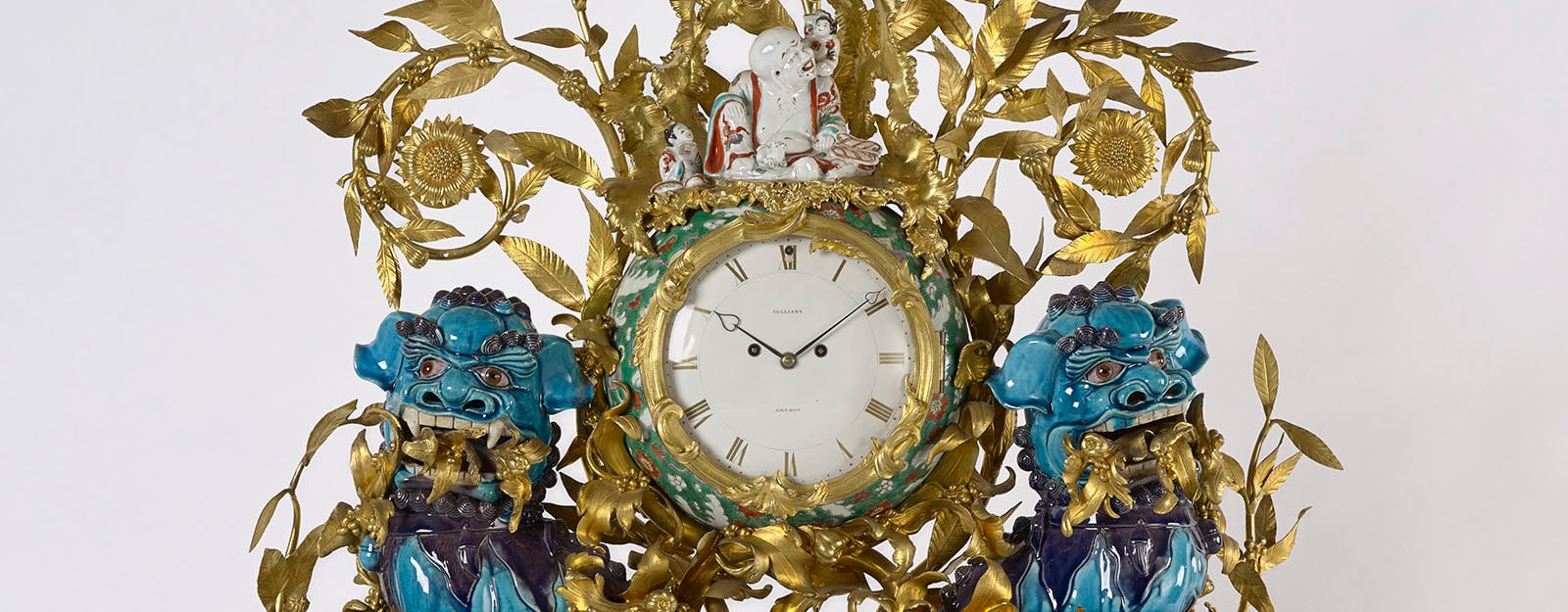
A Prince's Treasure
120 objects from the Royal Collection return to the Royal Pavilion in Brighton
Pair of mounted ewers
vases: 1730-40, mounts: c.1745-55Porcelain with carved relief decoration under a celadon glaze and gilt bronze | 30.8 x 17.5 x 9.5 cm (whole object) | RCIN 360
These Chinese celadon vases, each in the form of grotesque carp, were made in China in around 1740 and not long afterwards were mounted as ewers in France. The two vases were not made in the same mould and their glazes are markedly different, indicating that they may have been made into a pair by the marchand-mercier responsible for mounting them. Their form suggests that they may in fact have been made for the purpose of mounting in the West. The gilt bronze mounts separate into six pieces (the handle, the two sides of the base, the acanthus-leaf mount of the tail, one of the shells at the back and a base plate), which are screwed together in such a way as to disguise the joins.
Vases of this type arrived in France in some numbers. A similar vase with the same design of mounts appears in a painting of the Baron de Besenval of 1790-1 by Henri-Pierre Danloux (National Gallery, London), and a closely related pair of ewers is in the National Gallery of Art, Washington DC. Other examples were sold at Christie's, London, 11 June 1992; Christie's, New York, 26 October 1994 and 23 May 1995.
The monochrome grey-green celadon glaze which had been a staple of the Longquan kilns for centuries during the Ming period and earlier was taken up by the porcelain factories of Jingdezhen in the seventeenth century; and from the reign of Kangxi (1662–1722) onwards, wares of distinction were made in this style, frequently with reticent incised decoration. They were among those which the marchand-merciers of Paris most often sought out for mounting in gilt bronze, and many fine examples of their art, together with that of English bronze makers, displayed to effect at the Royal Pavilion, Brighton, were brought together by George IV.
Text adapted from Chinese and Japanese Works of Art in the Collection of Her Majesty The Queen: Volume II and from Royal Treasures, A Golden Jubilee Celebration, London 2002







